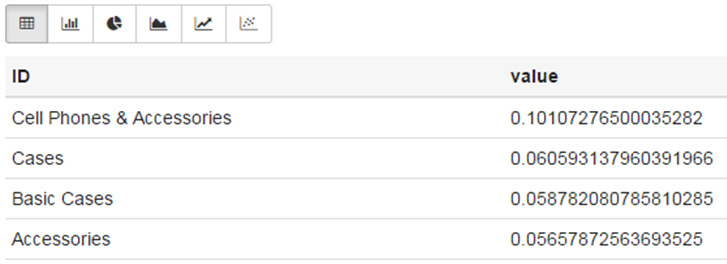1.13 Using the Graph Zeppelin Interpreter Client
Oracle Graph provides an interpreter client implementation for Apache Zeppelin. This tutorial topic explains how to perform simple operations using the graph Zepplin interpreter client.
See Installing the Graph Zeppelin Interpreter Client for more details to install the graph interpreter into your local Zeppelin installation.
Using the Interpreter
If you named the graph interpreter pgx, you can send paragraphs to
the graph server by starting the paragraphs with the %pgx directive, just
as with any other interpreter.
The interpreter acts like a client that talks to a remote graph server. You cannot run a graph server instance embedded inside the Zeppelin interpreter. You must provide the graph server base URL and connection information as illustrated in the following example:
%pgx
import oracle.pgx.api.*
import groovy.json.*
baseUrl = '<base-url>'
username = '<username>'
password = '<password>'
conn = new URL("$baseUrl/auth/token").openConnection()
conn.setRequestProperty('Content-Type', 'application/json')
token = conn.with {
doOutput = true
requestMethod = 'POST'
outputStream.withWriter { writer ->
writer << JsonOutput.toJson([username: username, password: password])
}
return new JsonSlurper().parseText(content.text).access_token
}
instance = Pgx.getInstance(baseUrl, token)
session = instance.createSession("my-session")The Zeppelin interpreter evaluates paragraphs in the same way like a graph shell CLI and returns the output. Therefore, any valid graph shell CLI script will run in the Zeppelin interpreter, as in the following example:
%pgx
g_brands = session.readGraphWithProperties("/opt/data/exommerce/brand_cat.json")
g_brands.getNumVertices()
rank = analyst.pagerank(g_brands, 0.001, 0.85, 100)
rank.getTopKValues(10)The following figure shows the results of that query after you click the icon to execute it.
As you can see in the preceding figure, the Zeppelin interpreter automatically
renders the values returned by rank.getTopKValues(10) as a Zeppelin table,
to make it more convenient for you to browse results.
Besides the property values (getTopKValues(),
getBottomKValues(), and getValues()), the following
return types are automatically rendered as table also if they are returned from a
paragraph:
PgqlResultSet- the object returned by thequeryPgql("...")method of thePgxGraphclass.MapIterable- the object returned by theentries()method of thePgxMapclass
All other return types and errors are returned as normal strings, just as the graph shell CLI.
For more information about Zeppelin, see the official Zeppelin documentation.
Parent topic: Property Graph Support Overview
